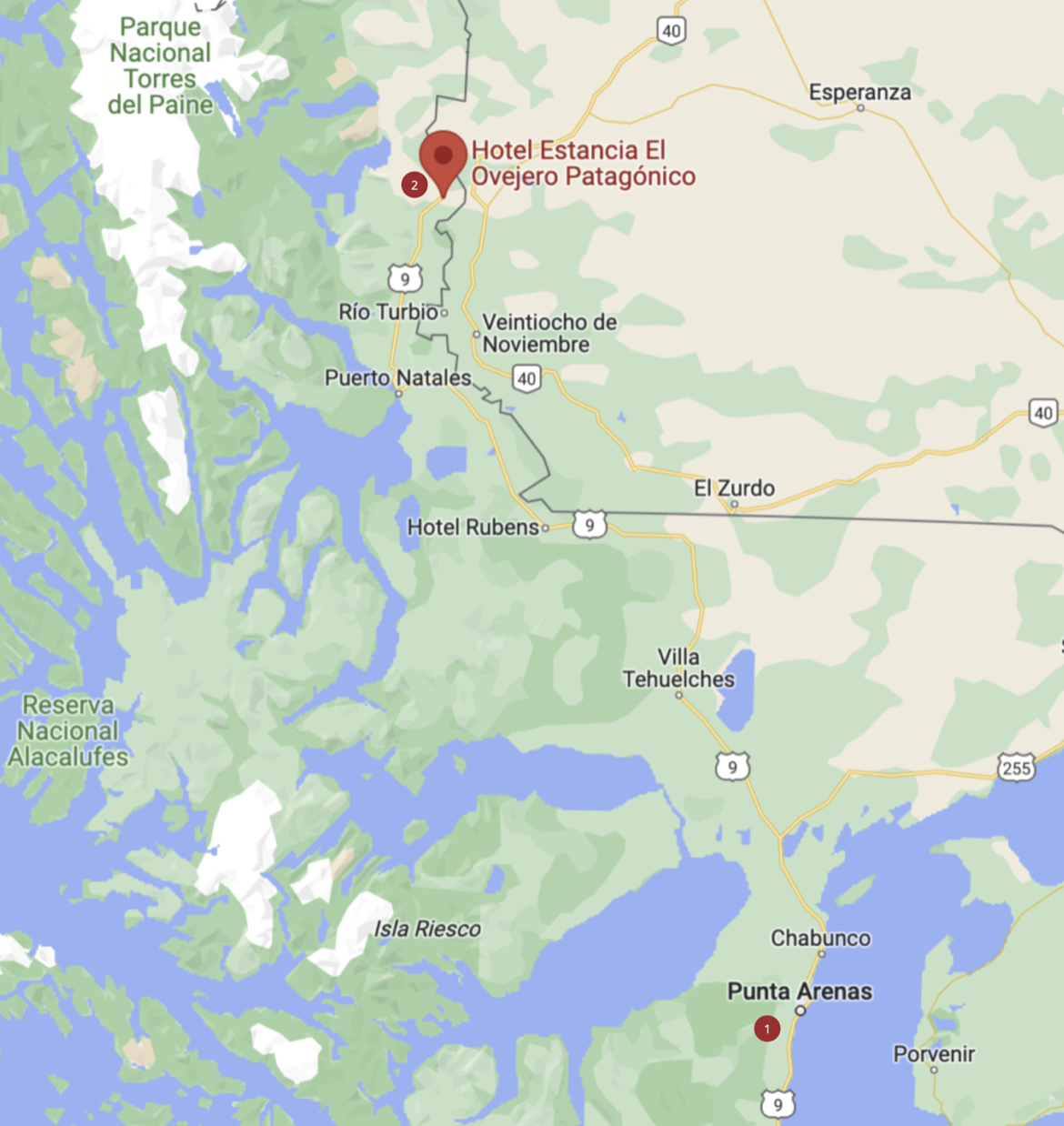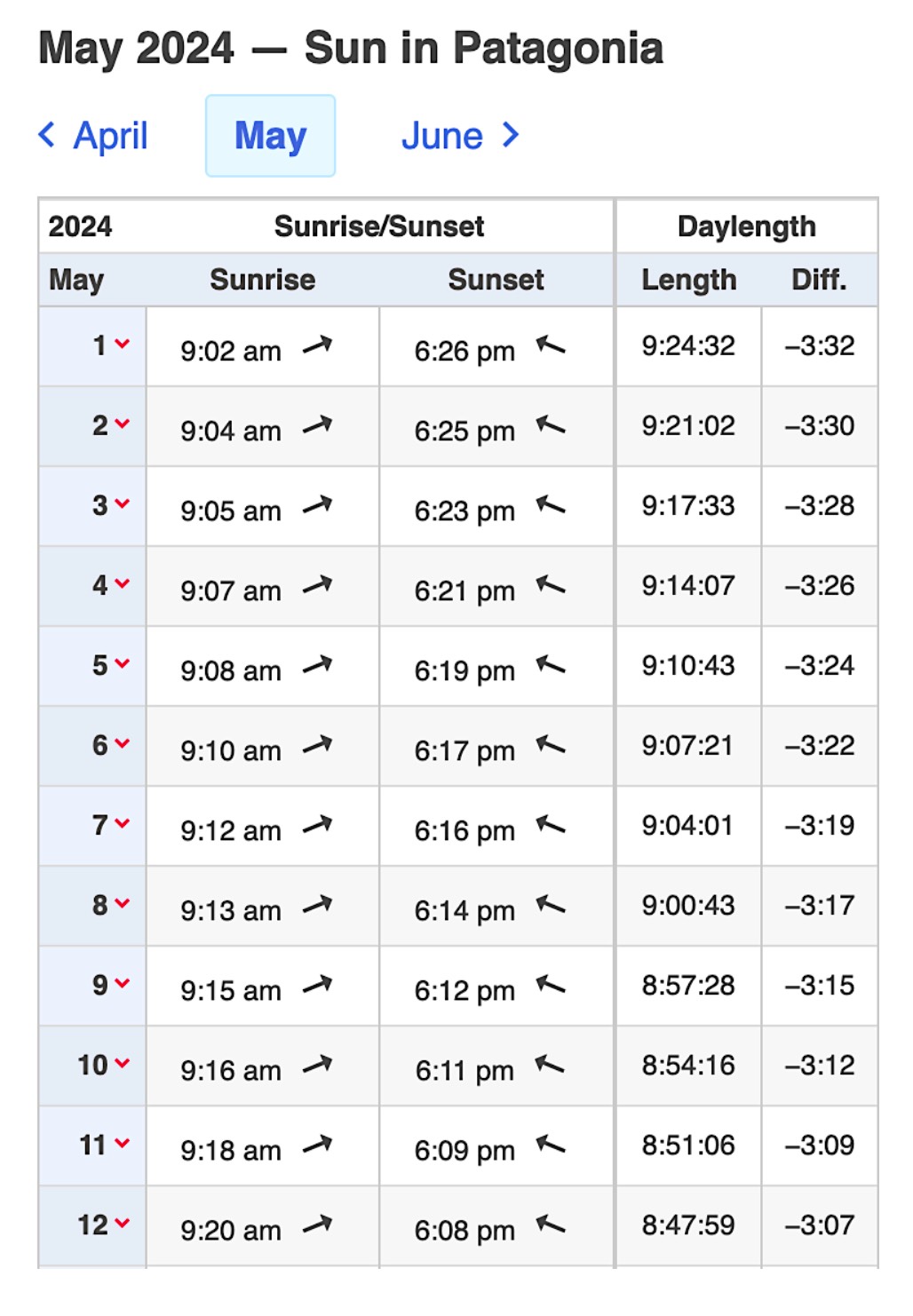Holiday Inn, Santiago Airport
Estancia El Ovejero
Estancia El Ovejero Patagonico is a hotel in the middle of the Patagonian Pampas in Cerro Castillo, Chile.
Patagonia is a large region encompassing the vast southernmost tip of South America. It is shared by Argentina and Chile with the Andes creating the dividing line. The Argentine side contains arid steppes, grasslands and deserts while the Chilean side has glacial fjords, emerald lakes and dramatic peaks. The remote wind-whipped Chilean Patagonia is the best place in the world to track South America’s second largest cat, the puma. Pumas are distributed over 9 million square kilometers (3.5 million square miles) from Punta Arenas, Chile all the way north to the southern border of Alaska. This is the greatest latitudinal range of any terrestrial mammal on earth. Yet with this extensive distribution, the best place in the world to track and photograph this stunning cat is in Patagonian Chile.
The puma (also known as mountain lion or cougar) is a large secretive cat and is known to reach sizes larger than some “big cat” species (leopards as an example). Adult males can reach 8 ft (2.4 m) from nose to tip of tail with a body weight between 120 to 220 lbs (52 to 100 kgs). The majority of pumas are primarily found in the mountains of North and South America in rocky crags and pastures lower than the slopes of grazing herbivores. However, with the expansion of human settlements and broad land clearance, the cats are being pushed into smaller, more hostile areas. Fortunately, they are highly adaptable which will allow them to avoid disappearing from the wild forever.
Like other species of cats, members live solitarily with the exception of the time cubs spend with their mothers.
Our 9 day trip will offer a “Puma Extreme” experience where we will be walking on foot over rolling hills and uneven grassy terrain in search of these elusive cats. Torres del Paine in Chilean Patagonia ALMOST guarantees daily sightings of these cats thanks to years of protection from hunting combined with a high density of their favorite prey, guanacos. Of course, we cannot guaranty seeing cats every day because nature is unpredictable, but we will have several days to achieve a highly successful trip.
All though our main focus for this trip is pumas, there are other animals that we may encounter such as:
As on all of our wildlife photography trips, it is important to manage expectations. Time and patience are important components for all wildlife photographers. Please expect to spend considerable time hiking to locations (in beautiful landscapes) with the help of our expert tracking team. Clouds, sun, wind, rain and even snow could potentially be factors for which we must prepare. Of course, inclement weather adds creative drama to our photography and is always artistically welcomed if we are adequately prepared.
Photographing wild animals involves dedication and patience. Please keep in mind that extended periods of time will be spent “waiting” in order to capture stunning imagery of wildlife action which is our goal for this trip.
$9,875.00

Letters correspond to points on the map in the map tab.
Arrive in Santiago any time during the day. This is considered a travel day and allows you to arrive in Chile a day early so that you are there in time for your flight to Patagonia the following day. The flights to Puerto Natales, Patagonia only fly three days a week so it is important not to miss this flight. This hotel was chosen for its proximity and convenience to the airport.
Overnight: Holiday Inn Santiago (meals on own / travel day)
Today you will fly from Santiago to Puerto Natales, Patagonia. You will be picked up and depending on flight arrival time, you will either have lunch in Puerto Natales or immediately be transferred to the lodge in Cerro Castillo, Patagonia. It is a 55km drive to the lodge. Upon arrival, settle in to your room and meet for dinner.
Overnight: Estancia El Ovejero (Dinner)
Our days begin before sunrise (just like Africa!) but fear not, sunrise in the southern hemisphere in May is just after 9:00am!!! Remember, we are here during the early winter.
We will have a cup of coffee and small bite before we head out with our guide. Our tracker Jorge will have already left the lodge with his GPS and radio. He will be on foot tracking pumas and will contact us via radio.
Once he locates a puma he will call us with the GPS coordinates and we will drive with our guide to the closest road side area. We will then proceed on foot carrying all of our camera gear. We will be out all day during this trip because winter is approaching the southern hemisphere and the days are short. We will bring a packed lunch with us so that we can take advantage of the daylight hours this far south on the planet.
The pumas sleep during the day so if there is a lull, we can go with our guide into the Torres del Paine national park and experience the beauty that has given Patagonia its well deserved reputation. We will then return to the pumas and end our day in the field as the sun starts to sink behind the mountains.
When each day with the puma (s) comes to an end, we will make our way back to the lodge to download our images or just enjoy a glass of wine before dinner. Sleep. Wake up. Repeat!!!!
Overnight: Estancia El Ovejero (B,L,D)
After breakfast and depending on the time of our flight, we will leave the lodge and make our way to Puerto Natales in time for our return flight to Santiago.
We hope that Patagonia, the land that protects these elegant cats has been a special and unforgettable experience while at the same time providing photographic proof with the images that you have taken. Safe journey home. Adios!
Travel day (Breakfast only)
Travel Insurance Recommended
Please consider obtaining Trip or Travel Insurance to cover eventualities which may cause travel difficulties or losses you may incur, of which Wild Focus Expeditions is not responsible. We strongly suggest Trip or Travel Insurance to all our guests to cover any unseen situations occurring prior to or during the trip which would cause any unforeseen losses.
This adventure requires a high-level of fitness. We will be walking approximately 2 – 3 miles per day carrying all of our camera gear on uneven, grassy terrain and rolling hills. We will need to be dressed properly to endure cold temperatures and high winds. Patagonia is the land of pumas but also of wind and weather. During a day out tracking the cats, the weather can change quickly so we will need to wear and carry clothing to make adjustments during the day. The weather can start out sunny and calm in the morning and then the next minute turn cold, wet and windy. It is unpredictable at best. If you do not possess a reasonable level of physical fitness and have an adventurous spirit, then this trip is not for you. But take heart. We haven’t had one person return from our Puma Extreme” adventure that hasn’t enjoyed every minute of it!
Also, please do not expect a high end lodge. The lodges in “Puma-land” are very overpriced for what they provide. Food costs at the lodge are actually more expensive than the lodge cost itself. But not to worry because the cost of all meals is included in your trip. Just keep in mind, this is an adventure and it is all about the stunning landscapes of Torres del Paine and coming face to face with pumas in the wild.
There is hardly any other place on earth that can compete with the stunning landscapes of southern Patagonia. And to find guanacos or pumas as a foreground for these jagged mountain peaks is the ultimate nature photography experience. I love being on my own feet with daily hikes in this beautiful landscape in order to find the elusive puma.
It is impossible to be unimpressed with the beauty of Patagonia. Torres del Paine’s mountains, granite towers, golden pampas and glistening lakes are a photographer’s dream. But to come face to face with a puma on foot is a unique experience. Standing in the pampa grasslands watching these sleek and elegant cats is absolutely exhilarating.

Wild Focus Expeditions provides specialized, small group photography tours. Our photography expeditions are designed to get participants into distinctive, engaging locations around the world at the optimum times for photography. Our photo tours are created by our team of photographers who want to experience and photograph the world's top wildlife, nature and traditional cultures locations.
Our quarterly newsletters are the best way to stay up on the latest news and information for both our current and upcoming expeditions.
